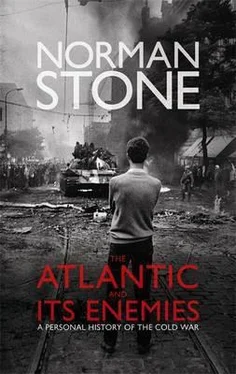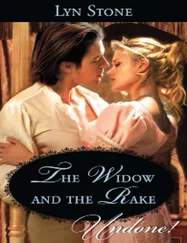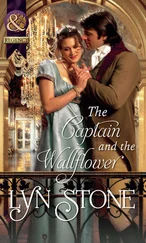There was a problem as regards Czechoslovakia. She was unique among the satellite states, in that her native Communists had been numerous and strong, based in a modern industry, in 1939 on much the same level as Belgium’s: true at any rate of the Czech two thirds, though not for the Slovak part. Czech Communists kept much of the investment for themselves, and Slovaks groused, as they did on cultural matters, since they counted as bumpkins, not unlike the Ukrainians over the border. A constitution of 1960 was strictly centralized, i.e. making no concessions to Slovak desires for autonomy, and collective farms were stronger than in Hungary, let alone Poland. President Antonín Novotný, visiting the Slovak cultural centre, was enraged by demands that Slovak culture should be promoted by the foreign machine; like most Czechs he did not think that there was any. There were little signs that matters were not going his way; very obscurely, key figures were moved in and out (this writer, spending a few months in prison in Bratislava at the time, had his own experience: v . Note, pp. 371-81). In 1964 Gustáv Husák made a secret speech, in the course of criticisms by the Bratislava municipal government, which led to demands from Prague for his expulsion, and Alexandr Dubček, who had a key role in matters economic, spoke up for the intelligentsia. But it was all very small-scale.
The Stalinist Novotný went on in office; as late as 1954, several months after the USSR had started to release Stalin’s victims, there was a minor purge trial, and a commission in 1957 even reaffirmed the guilt of the 1950-51 trial victims, though some were released. A huge Stalin statue even went up in 1955, demolished only when Khrushchev insisted, along with the removal of Klement Gottwald from his mausoleum. In an obscure place, much later, there was still a little ‘Stalin Square’. In Czechoslovakia there was nothing like the Polish peasantry, stubbornly stuck in subsistence agriculture; nor was there anything like the Polish Church, the Czechs having inherited a powerful anti-clerical tradition. Opposition to the Communists was enfeebled from the outset because it was itself largely Communist. It talked, and then talked again.
Still, there were signs of trouble in the woodwork, and a Party congress was postponed for several months in 1962. The 1951 purge trials continued to be a cause of unease, and there was a new commission to investigate them. In 1963 it pinned the blame on Gottwald, and by implication his close colleagues, some still in high places. A Slovak journalist — Miroslav Hysko — publicly denounced them, and was not himself arrested: the old trial verdicts were, instead, cancelled. All of this was evidence of much deeper currents. Further evidence came when a report late in 1963 stated that the campaign against Slovak nationalism in 1951 had been unjustified; and from prison there emerged Dr Husák, whom the Russians subsequently chose as their man in Prague. Novotný, an elderly figure recognizably in the Stalinist mode, was careful to dissociate himself from the old guard and only four of them remained; the warhorse Slovak secretary (Karol Bacílek, a Hungarian) was displaced in 1963 by a younger man, Dubček. Slovakia, when he was a child, had been part of old Hungary, and in the capital, Bratislava, Hungarian was still the second language. Anti-Catholicism in the later nineteenth century translated there, as in Hungary, into Communism in the twentieth, and Dubček somewhat resembled Imre Nagy in that he had spent time in the USSR, his parents having gone there; from the age of four until he was seventeen (in 1938) he had lived in Russia, and he attended the Moscow Higher Political School from 1955 to 1958. However, Imre Nagy had been galvanized by Hungarian nationalism, the original sense of the word coming from Luigi Galvani of Verona, who had noticed how a scalpel that had accidentally received an electric charge made the corpse of a frog twitch. Dubček remained something of a dead frog, and even resembled one. His speeches amounted to wooden language, with at most some sense that he opposed bureaucracy. The reformers’ candidate for president was also a veteran of the USSR, Ludvík Svoboda, who had had a role in the Communist takeover in 1948, as ostensibly non-Party defence minister. There was also trouble in the Czech lands. They had been highly industrialized, but were languishing: in 1961-3, economic growth had stopped, even been reversed. A Five Year Plan was abandoned, and in 1963 a team of experts under Ota Šik, who had been in the Politburo since 1958, argued for serious change, such that concerns’ profits should not go to the State, and management should be properly rewarded, with prices that reflected costs. A congress in 1966 approved a new system without parallel elsewhere in that world.
The backdrop was serious movement among the writers — not of course the 630 members of their union, the usual parade of elks, but in various journals, particularly Slovak, which were uncensored. The overall appeal was to the Soviet example, with denunciations of the ‘cult of personality’, and even Novotný tried to come to terms, inviting the writers to the Prague castle. But by the summer of 1967 there was deadlock at a ‘congress of the Czechoslovak writers’, and one was even imprisoned for giving details to an exile in France. Foreign Communists — Roger Garaudy and Ernst Fischer — became involved, as campaigns went ahead against the censorship, or against Czechoslovakia’s policy towards Israel. At the same time there was a burst of creativity, as Czechoslovak film made the rounds, and Milan Kundera surfaced; solemn socialism-with-a-human-face economists appeared, and Youth took a hand, protesting that repairs were not carried out in the dormitories at Strahov or that there had been a power failure. Talk went ahead, and beards nodded; the police behaved absurdly, censoring people for writing that ‘science ends where its freedom ends’ or, as in 1963, dismissing the entire editorship of an historical journal for publishing a review that indicated the gaps in a particular collection of orthodox texts. By the autumn of 1967 there was an atmosphere of crisis within the Party — itself greatly dominated by the proletariat — and there was a secret meeting, at which Dubček spoke, not for repression of the writers and students, but for a more suitable policy as regards Slovak industry. Novotný was pushed out, and the ‘Prague Spring’ burst. There was a May Day demonstration containing the banner headline ‘WITH THE SOVIET UNION FOR ALL TIME AND NOT A DAY LONGER’.
Much of this was froth. The Slovak Communists wanted federalization, and had used the Prague intellectuals to force the issue, but they warned in veiled language about any repeat of Budapest in 1956, and a Soviet general appeared to say that ‘international duty’ would be done if need be. Courts reopened cases, and there was much foreign applause, but reality lay with Husák, not Dubček. The background was manoeuvres by the Warsaw Pact, though Brezhnev in June still had ‘tears in his eyes’ to the effect that he would not intervene. The fact was that the Party still functioned; though many of the central committee delegates did not appear, in mid-July Soviet language in letters was more harsh. The French Communist Waldeck Rochet appeared to suggest an answer, and on 1 August Dubček met Brezhnev at Cierna nad Tisou, in sub-Carpathian territory on the Ukrainian border (the Soviet delegation steamed back every night to Csap, to the railwaymen’s club). Brezhnev simply did not want to see Czechoslovakia leave the Soviet zone, and did not trust her; the East Germans were adamant that Czechoslovakia must not become an Austria. Dubček was expected to restore the censorship, but the real problem lay with the Slovaks, who pressed for federalism, and would deal with Moscow rather than with a Prague intelligentsia full of its own words. The trick was then to find some old Czech proletarian characters who would collaborate, and that was quite easy. In mid-August the Russians started to use threatening, inquisitorial language. In the night of 20/21 August they moved in, an ‘appeal’ having been got together by the team that would then in effect run the country. Its furniture consisted of old trade union warhorses on the Czech side, and Slovak federalizing Communists on the other, and it was the latter who ran the regime. Gustáv Husák was installed in the presidential villa at Smichov, and Czechoslovakia then hardly disturbed the headlines for the next twenty years.
Читать дальше












![Edward Ellis - Adrift on the Pacific - A Boys [sic] Story of the Sea and its Perils](/books/753342/edward-ellis-adrift-on-the-pacific-a-boys-sic-s-thumb.webp)